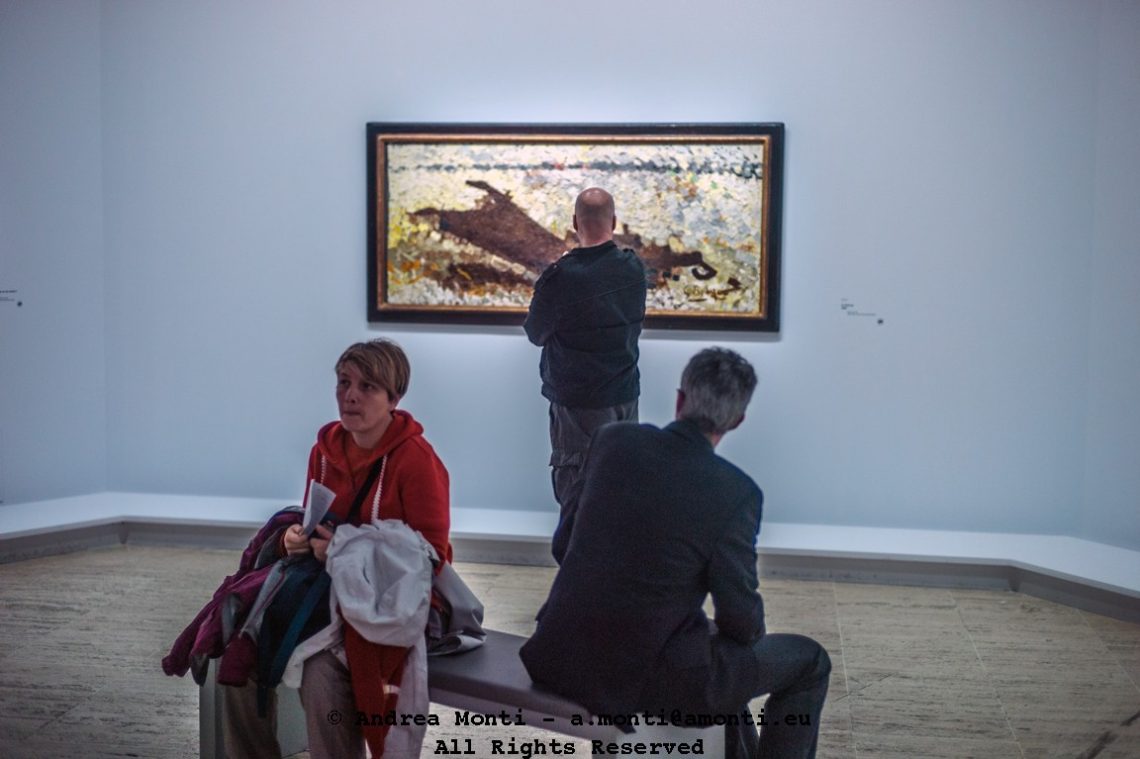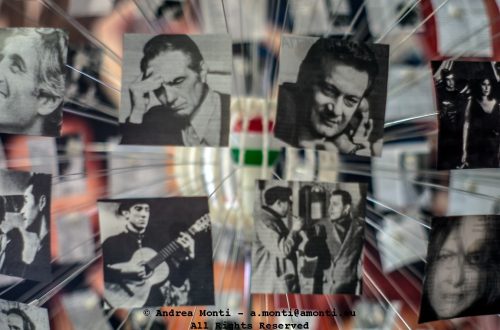
Tired or Fascinated?
Not so easy to tell… The question writes itself when you look at the scene. In the centre of the frame, a man stands before a long, textured painting. His arms are crossed, his head tilted slightly forward—posture locked in contemplation. The work before him, with its earthy tones and abstracted form, seems to have pulled him entirely into its orbit. He doesn’t glance away.
In the foreground, two seated figures tell a different story. On the left, a woman in a red hoodie sits with a jacket draped across her lap, holding a booklet. Her gaze drifts outward, past the viewer, her expression suggesting the mental pause that comes after saturation—when the art no longer competes successfully with fatigue. On the right, a man leans forward on the bench, his back to the camera, angled toward the painting yet not fully committed. His body is turned halfway, caught between engagement and retreat.
The photo thrives on this contrast. One work of art, three viewers, three separate narratives. The light is soft, neutral, almost clinical, giving no cue as to which reaction is correct. The sterile white walls erase distraction, forcing the human element to carry the emotional weight.
Art spaces invite both fascination and fatigue. They are arenas where time slows down, where moments of deep connection are interrupted by the realities of standing, walking, thinking too much. This frame captures both ends of that spectrum in a single moment, without judgement—only observation.




